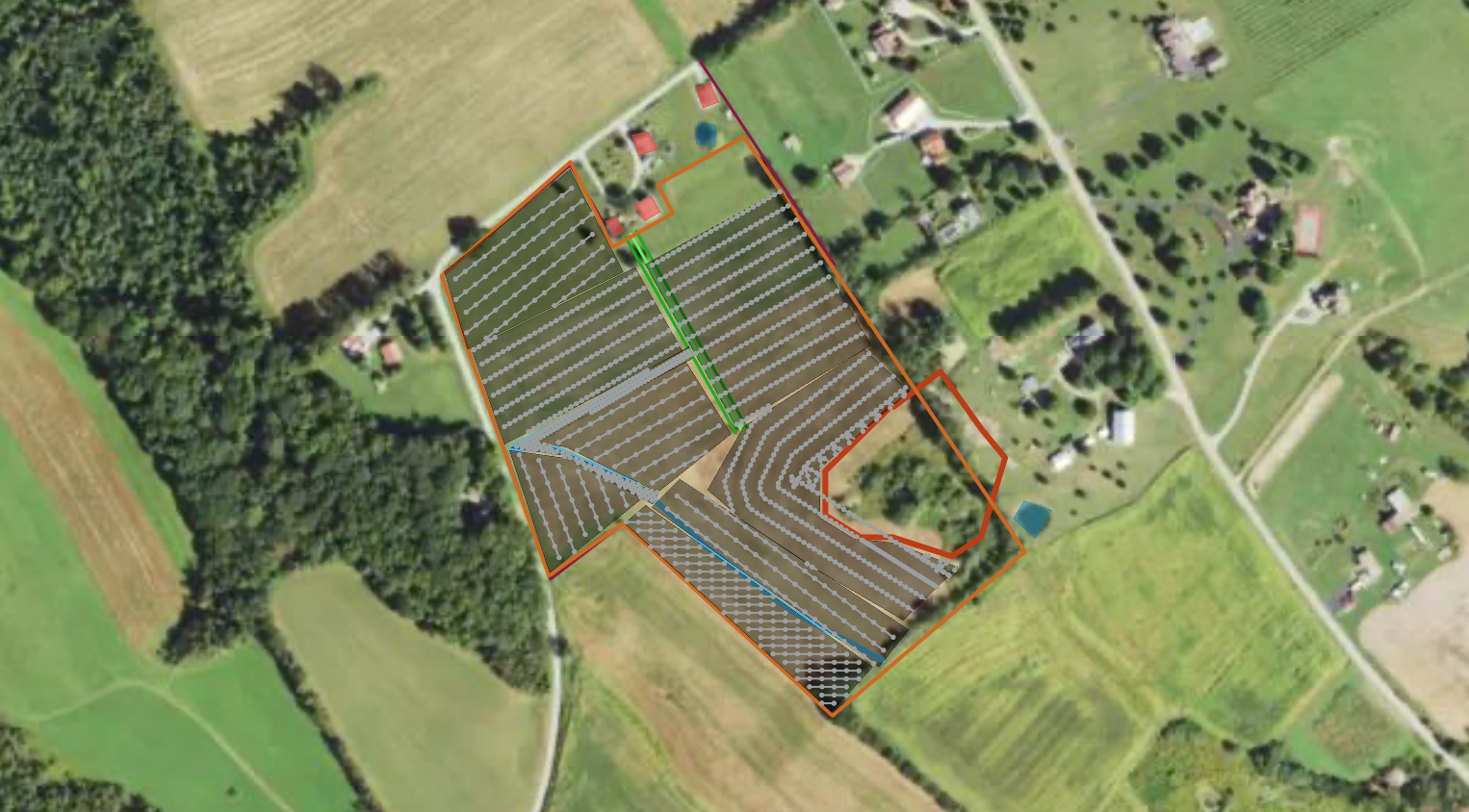Tree Talk, Vol. 3: Let's Plant Some Trees

We covered some important ideas over the past couple days.
One is that we need to shift our worldview to accept our role of stewards of the natural world and co-creators in something far bigger than we are.
Another is that our food systems are an important place to direct our energy.
Our food system is currently rooted in destruction. We take a piece of ground, kill everything, and replace what was once a polyculture with a monoculture. We use chemicals and tillage to hold it in this state.
We believe it is important to shift away from these models and towards models that use nature as a guide. For the Northeast US, trees seem especially important.
We support reforestation efforts, but we also support farms. There's no reason for these to be mutually exclusive. Humans should be integrated with nature, not held as something outside it.
We want to see trees on farms. We want to see more trees on more farms.
We talked about the problems this vision faces yesterday. Here they are again:
- There is limited awareness of the benefits of trees among farmers.
- There is limited documentation regarding planning and good design, including financial modeling.
- Getting good results with trees requires careful design and few people are providing this service.
- Planting trees takes a lot of time.
- There is a lack of funding opportunities (+ financial disincentives!)
I want to add a sixth problem. Tree availability. There are many trees out there, but it is challenging to get trees that are great for silvopastures. We need more nurseries that are raising trees with silvopastures in mind.
An example would be thornless, high sugar, high yield honey locusts. Almost all honey locusts that you can buy are thornless but bred to be street trees, so were selected to generate few pods. Austin has the best genetics in this regard because he was able to get seeds from the old Hershey nursery.
The important thing is that these are solvable problems. We can rise to the challenges and make good things happen.
To do that, we need to be organized.
The first step to organizing is to define your context and goals.
I've tricked you into participating in identifying our context. The last couple articles have dealt with the context of this organization.
Now it's time to turn our attention to goals.
Once we have a goal in place, it will be easier for us to build out the organization that we need.
I think that our goal should be clear and measurable.
I think it should be attainable.
I'm going to throw out a number.
Let's plant 1,000,000 trees.
Can we organize and plant 1,000,000 trees on farms in the next 5 years? 10?
What would that organization look like?
I can already hear some of you claiming that this number is too big. I don't think so. I think it is small enough to be achievable yet big enough to mean something.
Give me a chance to prove to you that we can do this.
1,000,000 trees.
How many farms would we need?
Our farm is less than 30 acres and there is room for well over 1000 trees. Let's go with the low density of 1000 trees per 30 acres. What does that amount to per acre?
33 trees per acre.
How many acres do we need to get to 1,000,000 trees at that density?
About 30,000 acres.
How many acres of farm land are there in PA?
According to the Farmland Information Center, Pennsylvania has over 9,000,000 acres of agricultural land. Over 1.5 million of those acres are pasture. As of 2017, over 700,000 acres were considered "permanent pasture".
A little over 4% of permanent pasture acres would need to go to silvopasture in order to plant 1,000,000 trees if we plant at a very low density and only work in PA.
What if we expand to other forms of agroforestry? What if we expand beyond the boundaries of PA?
Suddenly there are far more acres available for productive trees.
Here's something else. Some people plant their silvopastures at a density in the hundreds.
That would dramatically change the numbers.
If we were to plant at 200 trees per acre, then we're looking at only needing 5000 acres to plant 1,000,000 trees.
That is not a lot of acreage. That is 50 farms of average size.
Can we do that in 5 years? Surely we can!
These big, scary problems aren't really all that big and scary if you break down the solutions into the next actions we need to do to do something about it.
There is more to our vision than just trees. Holistic management. The idea that we should be managing with an eye to the whole. Not pursuing local optimums. All of these things are important.
But for right now, I say that this organization focuses on getting trees in the ground. Not just trees in the ground, trees in the ground as part of a polyculture.
We're not planting orchards of a single tree species, but we don't necessarily have to limit our attention to silvopasture.
We want to get more trees into places they would be beneficial to both the ecology and economy of the farm.
If you believe in this mission, you are a welcome part of the organization. Everyone can participate.
This is an organization in the general sense right now. We are organizing all the pieces needed to get more trees planted.
If you agree with me that the things I've been talking about might be important, I encourage you to be part of the solution.
Beat the drum!
Let's get organized and plant 1,000,000 trees.
We need farmers.
We need eaters.
We need funders (every $1 counts.)
We need designers.
We need experimenters and researchers.
We need trees.
We need acreage.
We need tree planters.
What roles do you want to help fill?
The main thing is to forge forward with a commitment to what is true and good. We must disrupt the slow descent to the inactive commonplace!
Even if this all turns out to be wrong, I will argue that we are right for trying because it is better than doing nothing.
We can do this.
Who's in?
Tree planting starts mid-February. We will have regular tree planting parties throughout February and March (prime tree planting season). Let's start with February 18. That's one month to get all our ducks in a row.
Life is good.
Links:
